A lethal model of disseminated dengue virus type 1 infection in AG129 mice
- PMID: 28949904
- PMCID: PMC5845568
- DOI: 10.1099/jgv.0.000923
A lethal model of disseminated dengue virus type 1 infection in AG129 mice
Abstract
The mosquito-borne disease dengue is caused by four serologically and genetically related flaviviruses termed DENV-1 to DENV-4. Dengue is a global public health concern, with both the geographical range and burden of disease increasing rapidly. Clinically, dengue ranges from a relatively mild self-limiting illness to a severe life-threatening and sometimes fatal disease. Infection with one DENV serotype produces life-long homotypic immunity, but incomplete and short-term heterotypic protection. The development of small-animal models that recapitulate the characteristics of the disseminated disease seen clinically has been difficult, slowing the development of vaccines and therapeutics. The AG129 mouse (deficient in interferon alpha/beta and gamma receptor signalling) has proven to be valuable for this purpose, with the development of models of disseminated DENV-2,-3 and -4 disease. Recently, a DENV-1 AG129 model was described, but it requires antibody-dependent enhancement (ADE) to produce lethality. Here we describe a new AG129 model utilizing a non-mouse-adapted DENV-1 strain, West Pacific 74, that does not require ADE to induce lethal disease. Following high-titre intraperitoneal challenge, animals experience a virus infection with dissemination to multiple visceral tissues, including the liver, spleen and intestine. The animals also become thrombocytopenic, but vascular leakage is less prominent than in AG129 models with other DENV serotypes. Taken together, our studies demonstrate that this model is an important addition to dengue research, particularly for understanding the pathological basis of the disease between DENV serotypes and allowing the full spectrum of activity to test comparisons for putative vaccines and antivirals.
Keywords: AG129 mouse; Flavivirus; dengue virus; mouse model; pathogenicity.
Conflict of interest statement
The authors declare that there are no conflicts of interest.
Figures

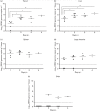
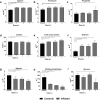
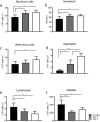
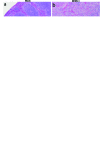
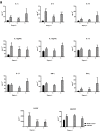

Similar articles
-
A Dengue Virus Type 4 Model of Disseminated Lethal Infection in AG129 Mice.PLoS One. 2015 May 4;10(5):e0125476. doi: 10.1371/journal.pone.0125476. eCollection 2015. PLoS One. 2015. PMID: 25938762 Free PMC article.
-
A lethal murine infection model for dengue virus 3 in AG129 mice deficient in type I and II interferon receptors leads to systemic disease.J Virol. 2015 Jan 15;89(2):1254-66. doi: 10.1128/JVI.01320-14. Epub 2014 Nov 12. J Virol. 2015. PMID: 25392217 Free PMC article.
-
Characterization of lethal dengue virus type 4 (DENV-4) TVP-376 infection in mice lacking both IFN-α/β and IFN-γ receptors (AG129) and comparison with the DENV-2 AG129 mouse model.J Gen Virol. 2015 Oct;96(10):3035-3048. doi: 10.1099/jgv.0.000246. Epub 2015 Jul 14. J Gen Virol. 2015. PMID: 26296350 Free PMC article.
-
Mouse models of dengue virus infection for vaccine testing.Vaccine. 2015 Dec 10;33(50):7051-60. doi: 10.1016/j.vaccine.2015.09.112. Epub 2015 Oct 23. Vaccine. 2015. PMID: 26478201 Free PMC article. Review.
-
Modulation of Dengue/Zika Virus Pathogenicity by Antibody-Dependent Enhancement and Strategies to Protect Against Enhancement in Zika Virus Infection.Front Immunol. 2018 Apr 23;9:597. doi: 10.3389/fimmu.2018.00597. eCollection 2018. Front Immunol. 2018. PMID: 29740424 Free PMC article. Review.
Cited by
-
Dengue and Zika virus infections are enhanced by live attenuated dengue vaccine but not by recombinant DSV4 vaccine candidate in mouse models.EBioMedicine. 2020 Oct;60:102991. doi: 10.1016/j.ebiom.2020.102991. Epub 2020 Sep 16. EBioMedicine. 2020. PMID: 32949997 Free PMC article.
-
Dengue mouse models for evaluating pathogenesis and countermeasures.Curr Opin Virol. 2020 Aug;43:50-58. doi: 10.1016/j.coviro.2020.09.001. Epub 2020 Sep 17. Curr Opin Virol. 2020. PMID: 32950933 Free PMC article. Review.
-
Glu333 in rabies virus glycoprotein is involved in virus attenuation through astrocyte infection and interferon responses.iScience. 2022 Mar 22;25(4):104122. doi: 10.1016/j.isci.2022.104122. eCollection 2022 Apr 15. iScience. 2022. PMID: 35402872 Free PMC article.
-
Characterization of a murine model of non-lethal, symptomatic dengue virus infection.Sci Rep. 2018 Mar 20;8(1):4900. doi: 10.1038/s41598-018-22618-w. Sci Rep. 2018. PMID: 29559699 Free PMC article.
-
Establishment of a lethal mouse model of emerging tick-borne orthonairovirus infections.PLoS Pathog. 2024 Mar 19;20(3):e1012101. doi: 10.1371/journal.ppat.1012101. eCollection 2024 Mar. PLoS Pathog. 2024. PMID: 38502642 Free PMC article.
References
MeSH terms
Substances
Grants and funding
LinkOut - more resources
Full Text Sources
Other Literature Sources
Medical

